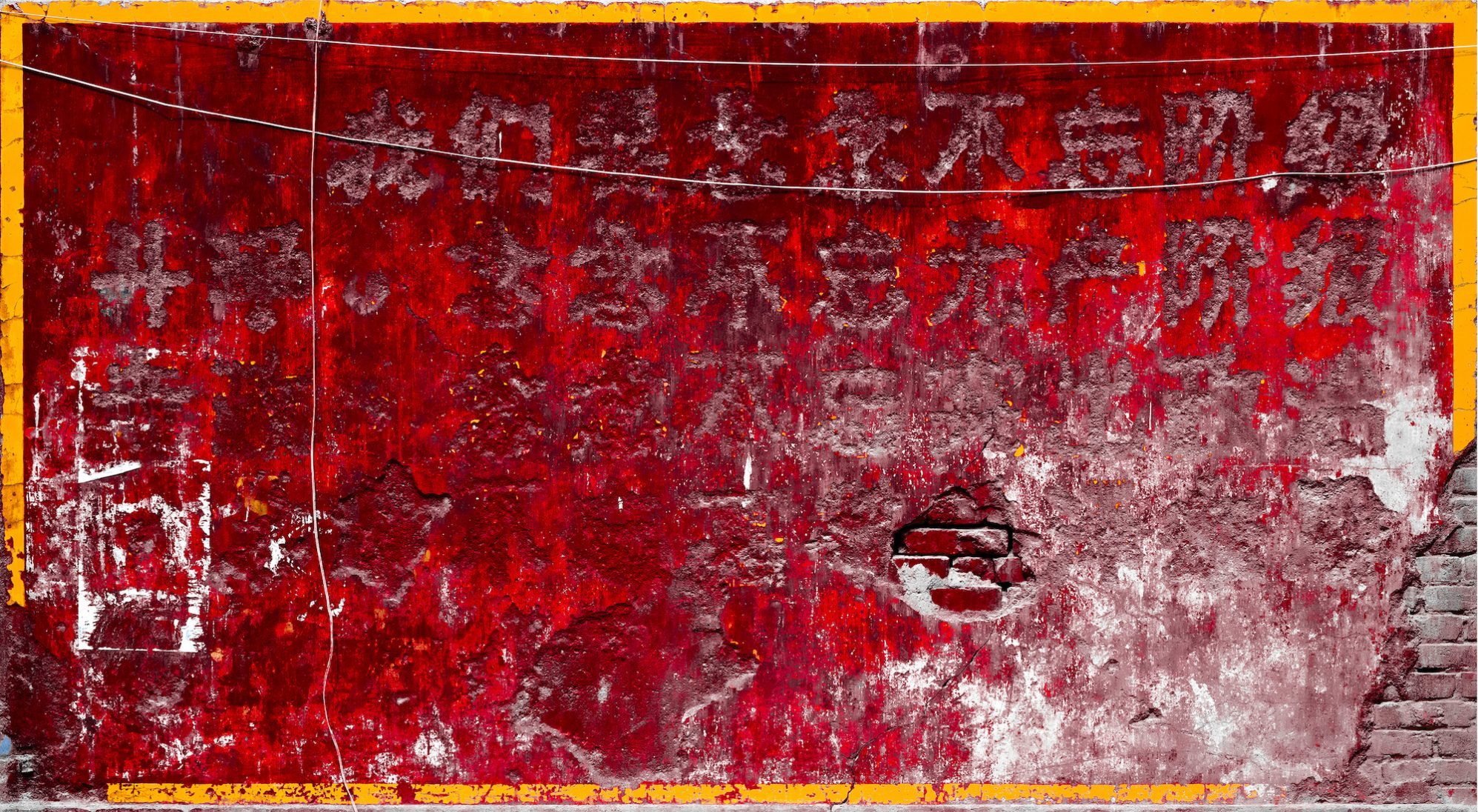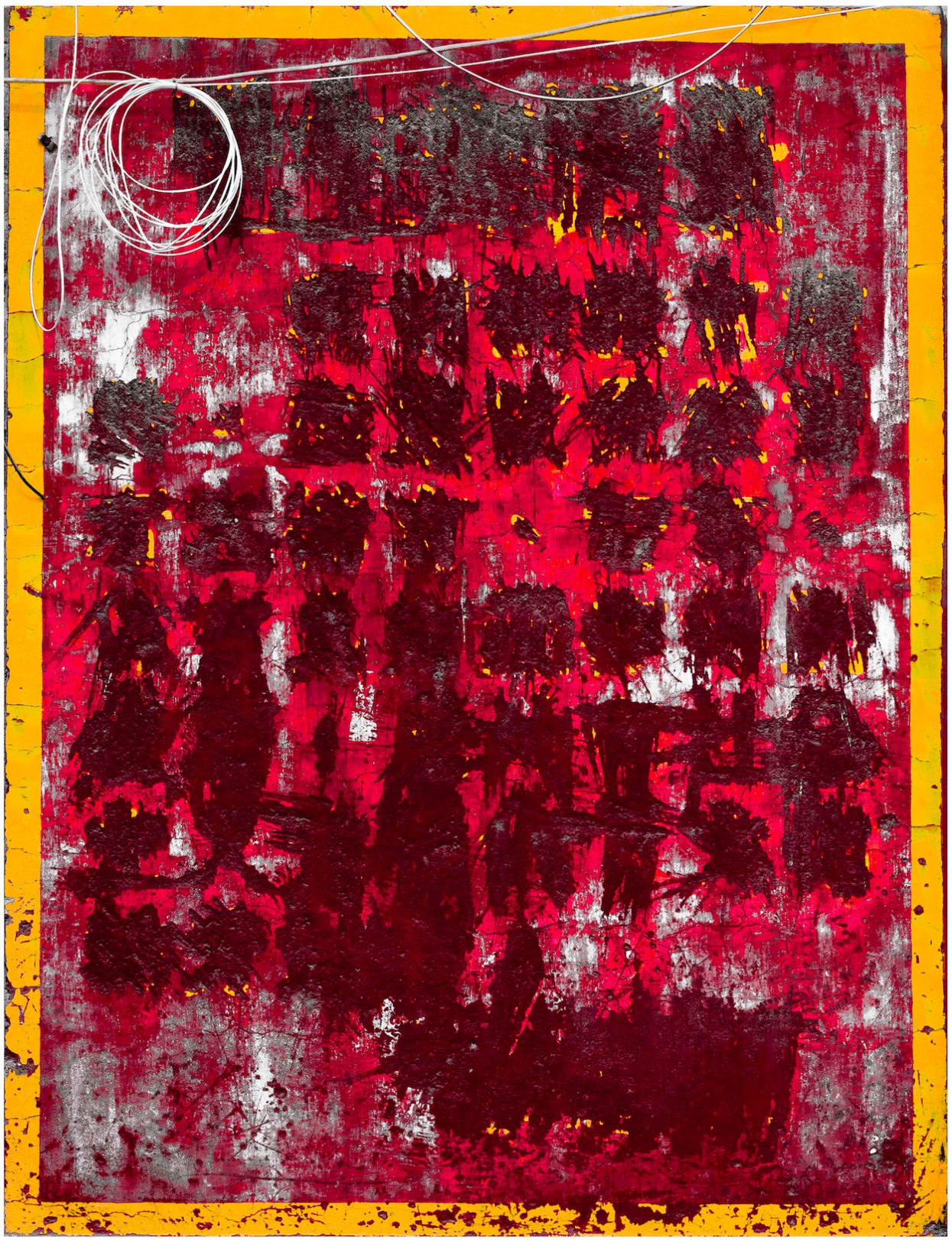While on an artist residency in 2018, Lisa Ross began exploring the low, brick buildings marshaled as military compounds under Chairman Mao Zedong in Lanzhou, an industrial city in northern China. Ross noted that on the walls of these danwei clung remnants of the only decoration allowed under Mao: propaganda murals composed of his quotations. Over the years, the walls had been sun-bleached, disfigured, graffitied; but just as current Chairman Xi Jinping has not removed Mao’s teachings from government philosophies, the paint remains, raised off their plaster grounds.
“Poisonous Weeds,” Ross’s show at Palo Gallery’s Selldorf Architects–designed flagship in Manhattan through July 2, grows out of that paint. Ross painstakingly uncovered almost every word of the murals, including them in the catalog with annotations of other signs of life built up around them over the decades. Then, in photographs of the murals, Ross invests the faded red-and-yellow paint colors with stronger hues, emphasizing their connections to Chinese history while increasing their legibility. The result is a series of photographs and semiotic excavation arguing that when a government coats a building with the words like “Whatever the enemy opposes/we must support it/Whatever the enemy supports/we must oppose it,” there’s blood on the walls.


